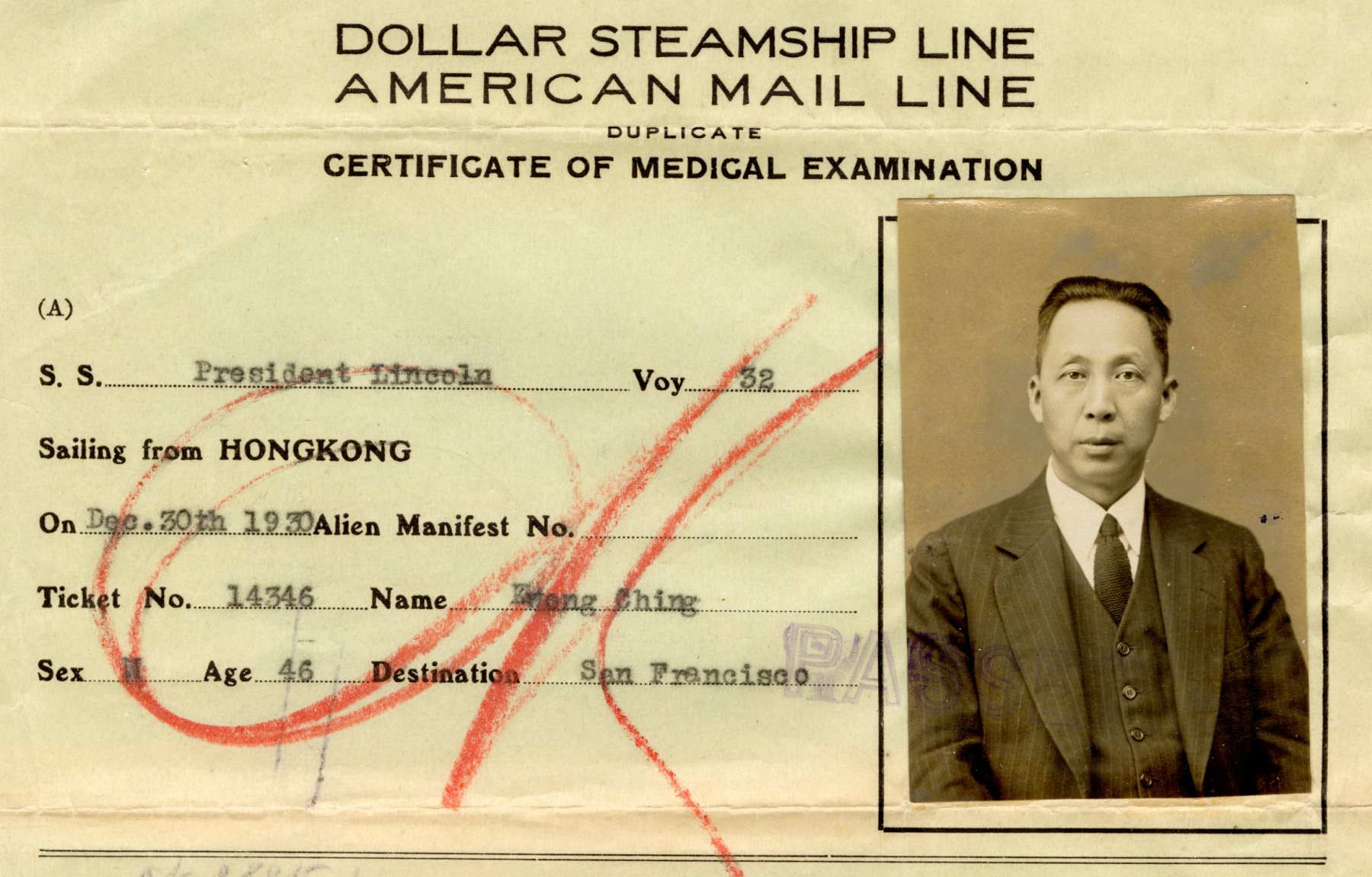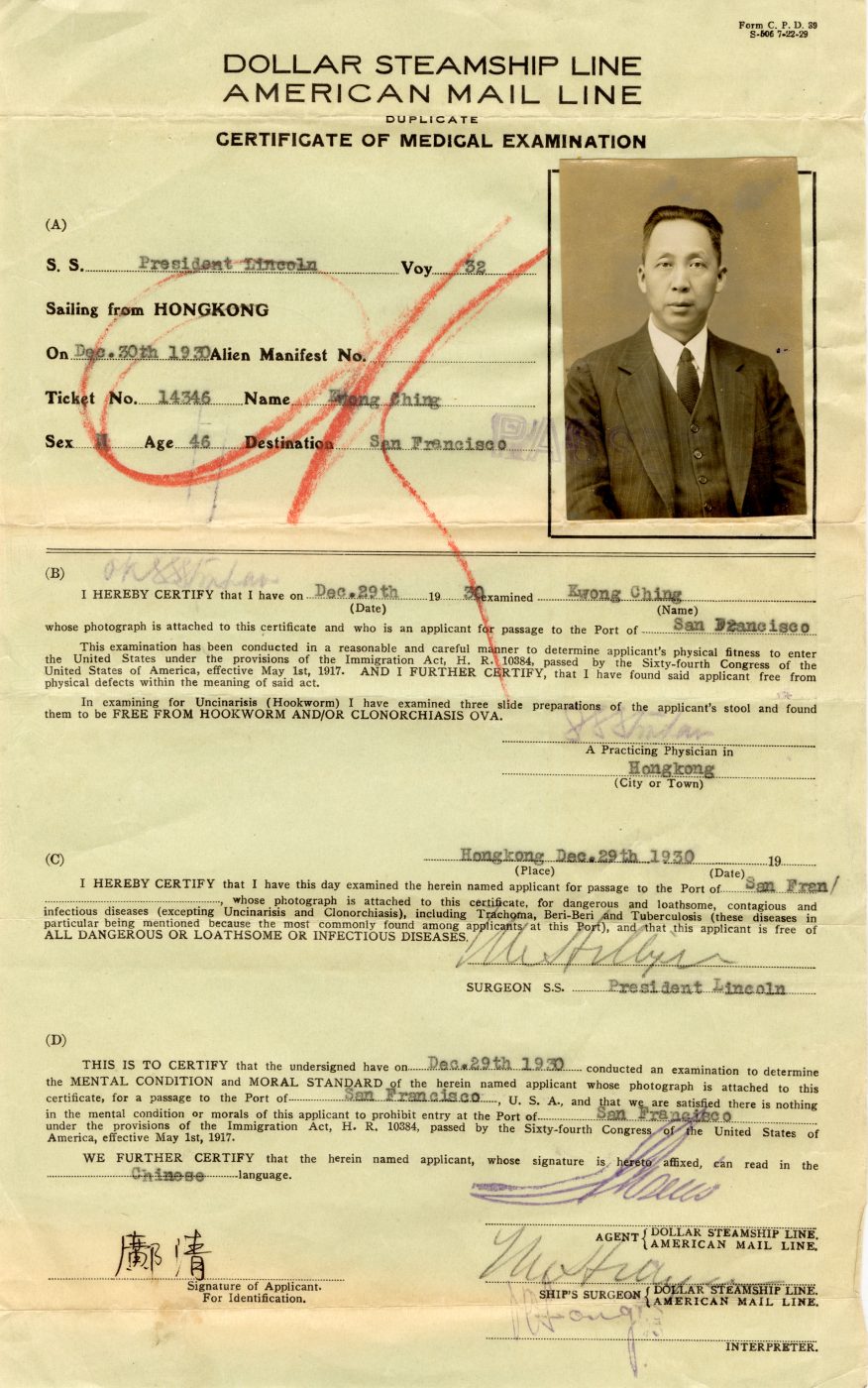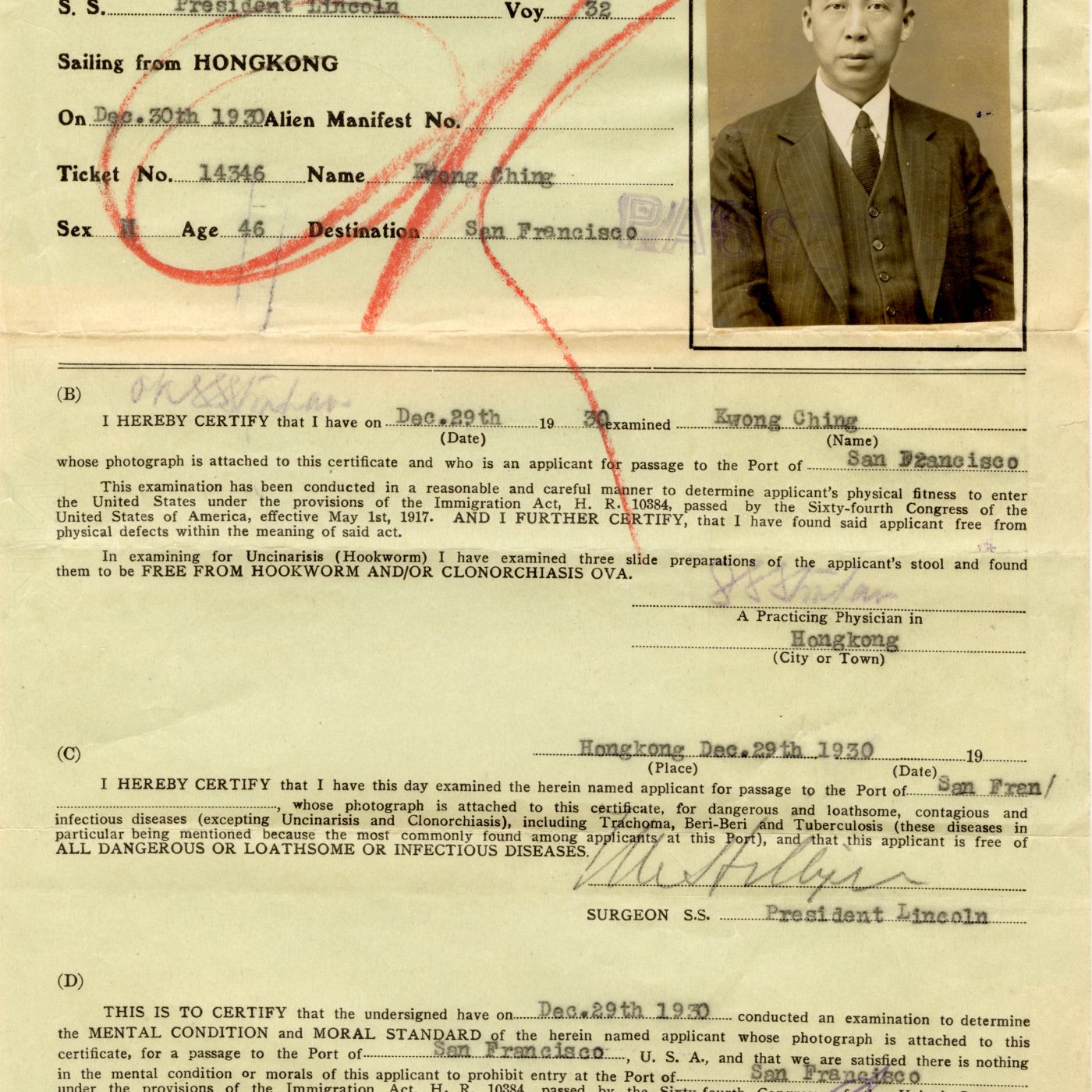This week, we feature a Dollar Steamship Line Certificate of Medical Examination. It details the journey of one Mr. Kwong Ching aboard the S.S. President Lincoln (not to be mistaken with the more famous USS President Lincoln sunk in 1918), traveling from British Hong Kong to San Francisco, United States.
A cursory look at the certificate will reveal that Mr. Ching was examined for various diseases and afflictions including but not limited to Tuberculosis, Hookworms, and Trachoma. The certificate also indicates that Mr. Ching underwent examination for mental disorders and for proper “moral standards”. In total, four individuals had to certify that Mr. Ching is in great mental and physical condition, including a doctor in Hong Kong, the ship’s doctor, a ship agent, and an interpreter.
The underlying reason behind this stringent examination of body and mind is in fact due to a U.S. legislation passed in 1917 known as the Immigration Act, or the Asiatic Barred Zone Act. This legislation had provisions that restricted immigrants from the “barred zone”, which extended from the Middle East to Southeast Asia. While there were exemptions made to individuals who were identified as: “Government officers, ministers or religious teachers, missionaries, lawyers, physicians, chemists, civil engineers, teachers, students, authors, artists, merchants, and travelers for curiosity or pleasure”, the act would still subject individuals to literacy tests, medical examinations, an alien tax of $8 (a 100% increase from the previous $4 tax based on a receipt from 1914 in our collection), among other “filters” meant to keep out people deemed as “undesirables” by the United States.
The 1917 Immigration Act reinforced and increased pre-existing restrictions of aliens entering the United States and such restrictive legislation would continue for the remainder of the early to mid-20th century.


